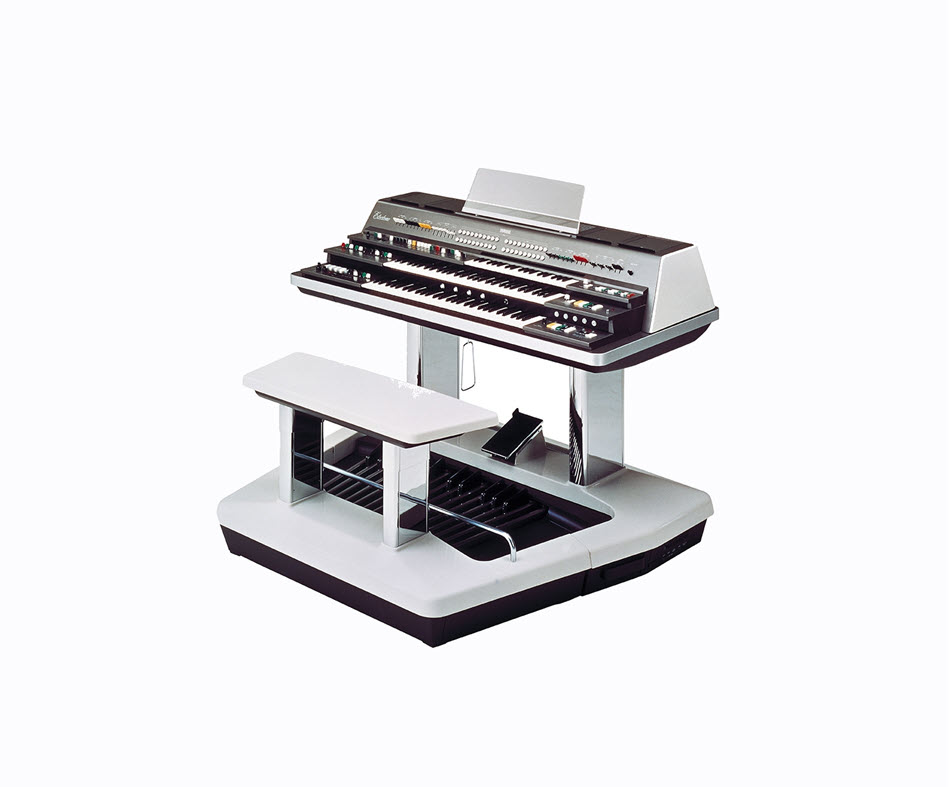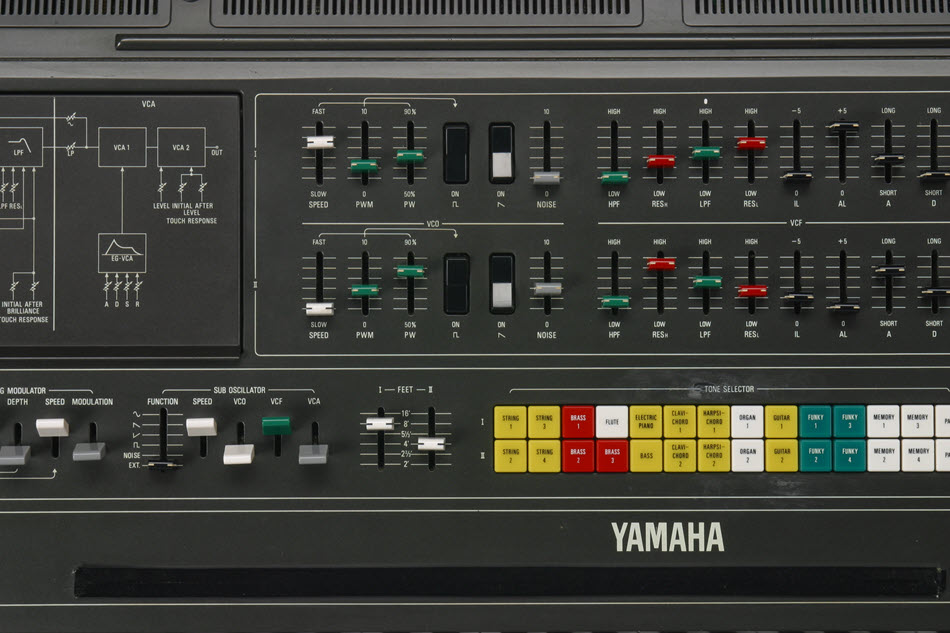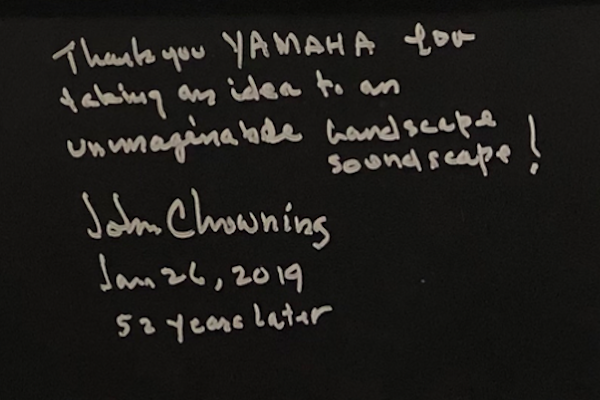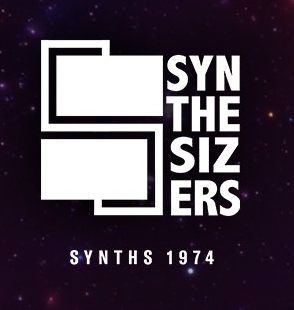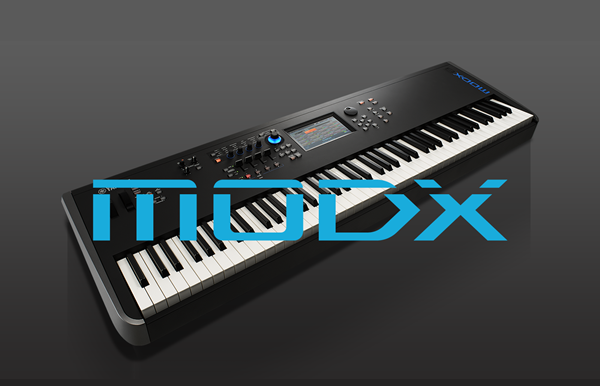History of the Synthesizer, Part 2
Technological advances from the 1980s onwards shape today’s synths.
In Part 1 of this two-part series, we explored the origins of audio synthesis. Those early synths were almost entirely of the analog variety — that is, they created sounds with the use of electronic components such as vacuum tubes and transistors.
Over the last half-century, the focus has instead been almost entirely on digital synthesis, where sounds are created from mathematical representations of audio waveforms; in essence, modern-day synthesizers are highly specialized computers. Here in Part 2, we’ll explore their more recent forebears and describe several key technologies that lie at the heart of today’s synths.
Additive and Wavetable Synthesizers
The dawn of the 1980s saw the release of the second-generation New England Digital Synclavier II, which added a simple FM structure (see below) and a 32-track sequencer, making it a full-blown production workstation … albeit a very expensive one. At around the same time, the Italian company Crumar released the GDS Digital Synthesizer, building on work done by designer Hal Alles at Bell Labs, followed two years later by the Synergy, an additive synth that was favored by composer Wendy Carlos for decades.
German musician and inventor Wolfgang Palm’s pioneering work in wavetable synthesis saw fruition with the release of the PPG Wave in 1981. This digital technology used groups of single-cycle waveforms stored in a lookup table, which could be played back, or swept through in real time for a very signature sound. In 1985, the U.S. company Ensoniq released a wavetable synthesizer called the ESQ-1, which used static waveforms and an analog filter to produce a distinctive tonality. The following year, Sequential offered a novel approach to manipulating single-cycle waveforms with the Prophet VS, which used a joystick or other modulators (such as forward/backward looping envelopes) to cross-fade between four waveforms at a time.
Clearly, progress was being made in refining digital synthesis … but it was a different technology altogether that would cause a cataclysmic shift in the industry.
FM Synthesis
Since the mid-1960s, composer and electronic musician John Chowning had been experimenting with ways to shift sound around in a 3-dimensional space. One eventful night in the autumn of 1967, he discovered that modulating one computer-generated waveform with another at high frequency rates (much faster than traditional LFO-based vibrato) produced a timbral shift. His explorations of this technique led to the birth of FM (Frequency Modulation) synthesis. Yamaha licensed and continued developing the technology with Chowning’s help, first implementing it in two preset synthesizers, the GS1 and GS2, both released in 1981.
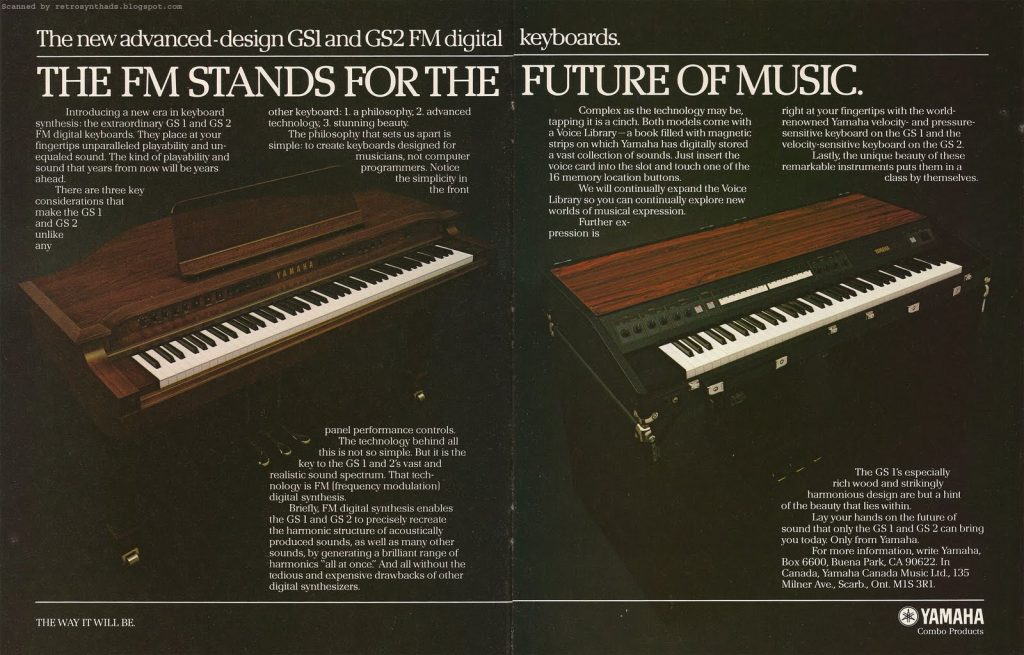
Over the next two years, Yamaha completed development of a voice architecture and user interface for programming FM, and, in 1983 debuted the DX7, which quickly became the best-selling synthesizer of all time.
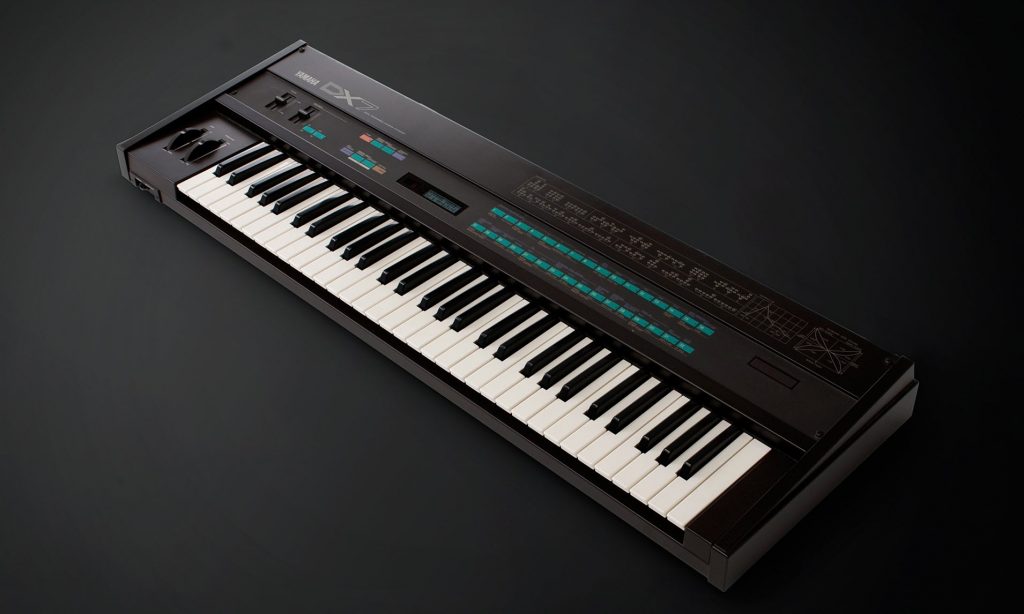
In addition to its velocity- and aftertouch-sensitive keyboard and 16-note polyphony (both radical innovations for the time), the level of timbral complexity and editing capability it provided was unparalleled, giving the DX7 universal appeal to musicians, composers and sound designers the world over. The genie was at last out of the bottle: digital synthesis became the mainstream.
The time was ripe for a technology that would tie it all together, and that would come with …
The Birth of MIDI
The concept of MIDI (an acronym for Musical Instrument Digital Interface) was first announced to the world in 1981 and within a few short years it was adopted by all major synthesizer manufacturers. It was a revolutionary technology that allowed digital instruments — even if they were made by different, competing manufacturers — to communicate with each other in real time using a simple computer language transmitted and received over a single bi-directional cable.
MIDI has grown and evolved over the years, and is today a universal standard for tying synthesizers and computers together — a technology that has even garnered a Grammy® Technical Achievement Award. Its widespread acceptance did much to accelerate the growth of the synthesizer industry throughout the ’80s and beyond, and helped spawn new musical genres such as electronic dance music (EDM), techno, house and synth-pop.
Sampling Comes to the Forefront
As described in Part 1, the CMI Fairlight, introduced in 1979, was the first instrument to use the term “sampling.” Three years later, the Fairlight Series II would improve on the sampling technology and add a sequencing system. It was expensive but successful, and featured prominently in many recordings of the era, including those by Peter Gabriel, Stevie Wonder, Herbie Hancock, Trevor Horn and Jan Hammer.
A more affordable sampling keyboard was released in 1981: the E-mu Systems Emulator, which was capable of recording brief snippets of sounds that were then stored on floppy disk. It was followed in 1984 with the Emulator II, which also saw widespread use in many recordings of the era. The Kurzweil K250 was one of the first keyboard instruments capable of storing sampled sounds into instantly accessible ROM (Read Only Memory), albeit very short ones. But its ability to reproduce the sound of acoustic instruments with great accuracy was heralded, and the system grew in both features and specs throughout the decade.
Other sampling instruments of the ’80s worthy of note include the Ensoniq Mirage and the hugely popular range of Akai S-Series samplers — especially the S1000, which found particular acceptance among the growing number of musicians who were recording in bedrooms the world over, making it one of the most omnipresent samplers of the ’80s.
Over the next few decades, sampling technology would improve by leaps and bounds, moving from 12-bit to 16-bit to 24-bit resolution, with higher and higher sampling rates (44.1 kHz to 48 kHz to today’s standard of 96 kHz), along with more available RAM memory for the storage of sounds.
Sampling and Synthesis Converge
Despite the limitation of needing fast processors and large amounts of memory in which to store data, sampling offered one major advantage: it could easily recreate the complex transients and timbres that were difficult to achieve via synthesis. Roland first came up with the idea of combining both approaches with their D-50, introduced in 1987. Here, sampled attack transients were layered with (or cross-faded into) longer waveforms created with traditional subtractive synthesis methods that employ filters to remove unwanted overtones. The addition of comprehensive onboard digital effects, including reverb, helped to glue the sounds together, and the D-50 soon achieved a great deal of popularity. 1988 saw the release of the Korg M1, which was a completely sample-based instrument with effects and a sequencer. A year later, Yamaha started combining FM and sampled waveforms (commonly called PCM — Pulse Code Memory), first in their SY77, followed by the more advanced SY99 in 1991.

More Digital Technologies are Explored
Not all companies utilized PCM as the basis for their oscillator waveforms. Casio CZ Series synths (including the very popular, and very inexpensive CZ-101) built upon FM but used a slightly different type of modulation technology called phase modulation. Kawai chose to explore additive synthesis, first releasing the K5 in 1985, followed by the more advanced K5000W workstation (which combined synthesis, effects and sequencing) in 1996.
Korg further developed the principles first explored on the Prophet VS with their 1990 Wavestation synthesizer, which added a new way of moving through disparate waveforms called wave sequencing. As the instrument cycled through a list (sequence), the waveforms could either be crossfaded from one to the next or could be hard-switched to create distinctive rhythmic figures.
Physical modeling was a technology that had been explored in academia for a number of years, but it first came to market with the 1994 release of the Yamaha VL1. This was a form of digital synthesis that used high-speed digital signal processing (DSP) to recreate the properties and timbral characteristics of known acoustic and physical objects, such as a blown tube, a plucked string, a struck membrane, etc.
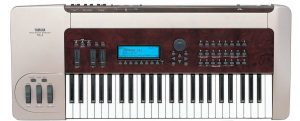
Other companies soon followed. The Korg Prophecy, introduced in 1995, added modeled analog synthesis, bringing new science to the sound and methods of an older form of synthesis. That same year, Swedish manufacturer Clavia released a modeled analog (more commonly called virtual analog) instrument: the Nord Lead. The company has continued to develop and refine the concept throughout the years, as have many others, including Roland with their JP-8000 (1996), Yamaha with their AN1x (1997), the German company Access Music with their Access Virus (1998), and Korg with their Z1 (which was released in 1997 and offered multiple forms of modeling), followed three years later by the MS2000.
Given the faster processors and cheaper memory that became available starting in the 1990s — a trend that continues today — it was perhaps inevitable that all these technologies would converge. Yamaha, for example, created a very powerful multi-technology platform for their EX5, released in 1998 (the “EX” stood for Extended Synthesis). This forward-looking instrument combined FM, AWM (Advanced Wave Memory, a form of PCM), virtual analog, physical modeling, and a new type of DSP the company called FDSP (Formulated Digital Signal Processing). Click here for an extensive description of all these processes, and the ways they interacted with one another.
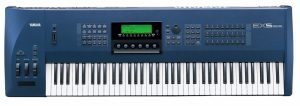
Many of the most successful keyboards of the 2000s have followed this “multi-synthesizer” concept. Roland merged PCM and modeling in their Fantom-G series of instruments, and Korg combined many different forms of synthesis in their OASYS and Kronos keyboards. Kurzweil introduced a type of DSP-based synthesis in their K2000 series instruments that was akin to the modular synth designs of old, allowing the user to configure building blocks of sound-producing and modifying functions — including virtual analog and FM — in almost unlimited ways.
Another trend of 21st century synthesizers is their ability to house physical add-on boards. Examples include the Korg Triton Series and the Yamaha MOTIF (the successor to the EX), which offered plug-in boards that added extra synthesis capabilities.

The current Yamaha flagship keyboard synth is MONTAGE M, which combines the most advanced implementation of FM along with extremely powerful PCM-based synthesis.

Software Synthesis
Most digital technologies are created and developed on computers, so it was logical that synthesis would follow. In 1997, a company called Seer Systems released the world’s first commercial software synthesizer — a program called Reality, which combined PCM, wavetable, FM, additive and physical modeling. That same year, German software company Steinberg created the VST (Virtual Studio Technology) standard, which integrated software synthesizers into digital audio workstation software.
Software synthesis continued to grow as computers became more powerful, and today it is integral part of most DAW (Digital Audio Workstation) software products such as Steinberg Cubase. It’s also the area where many cutting-edge developments are first introduced, including new forms of synthesis such as granular, where samples are split into small pieces of very short duration that can be layered on top of each other, playing at different speeds, phases, volume, and frequency, among other parameters. Other popular software synth products focus on the physical modeling of electro-mechanical keyboards such as the tonewheel organ and the electric piano.
Old Becomes New (Again)
In recent years, analog keyboards and modular gear have had a major resurgence. Back in 1996, a company called Doepfler Electronics developed a small format for analog modules called Eurorack — a format that thrives today, fed by a large community of boutique developers. Moog Music and Sequential have resurrected some of their historic designs, as have Roland and Oberheim, and Korg has even re-released a few of ARP’s most beloved products.
Today the past lives side-by-side with the future, and there has never been a more active and flourishing environment for cool ways to make new sounds and perform with cutting-edge synthesizer products.










